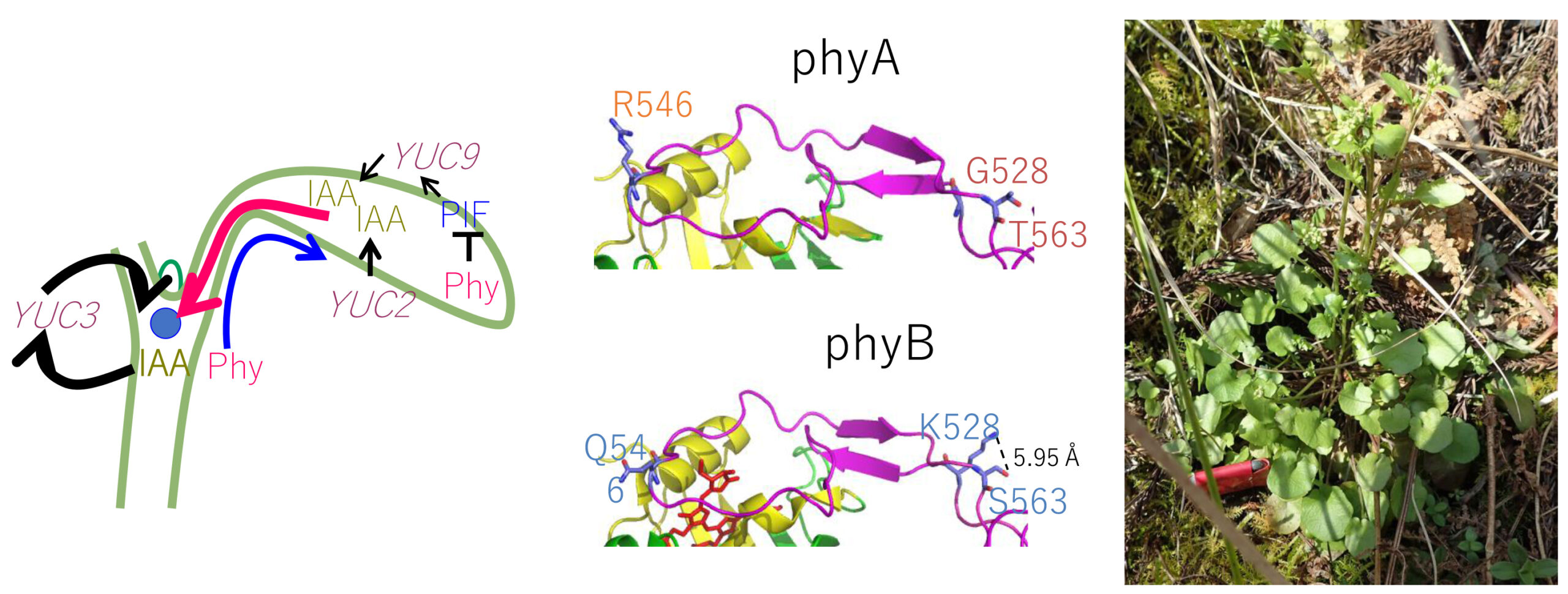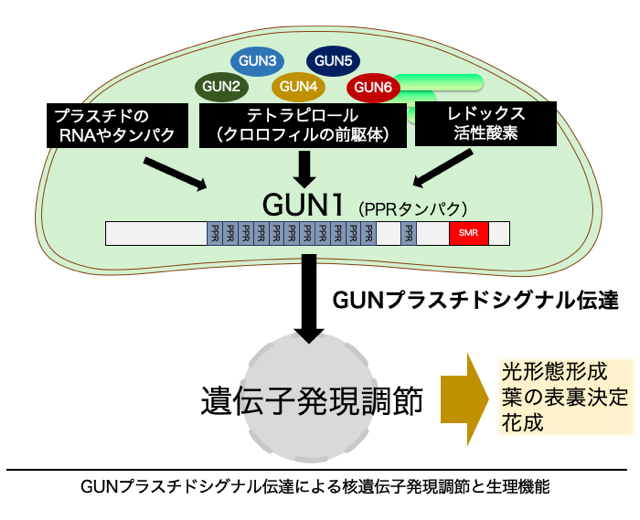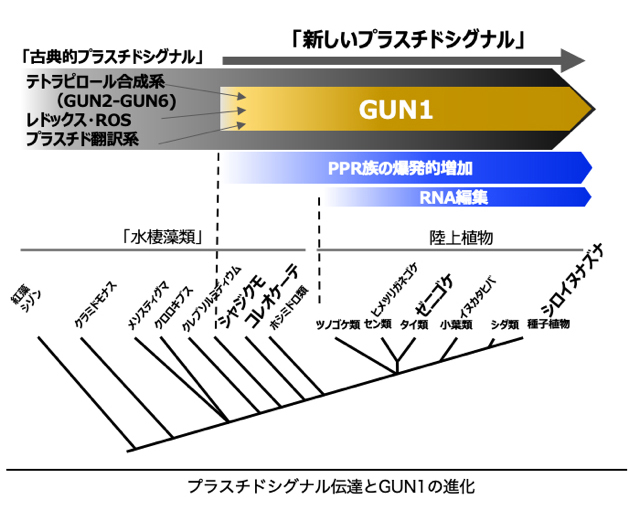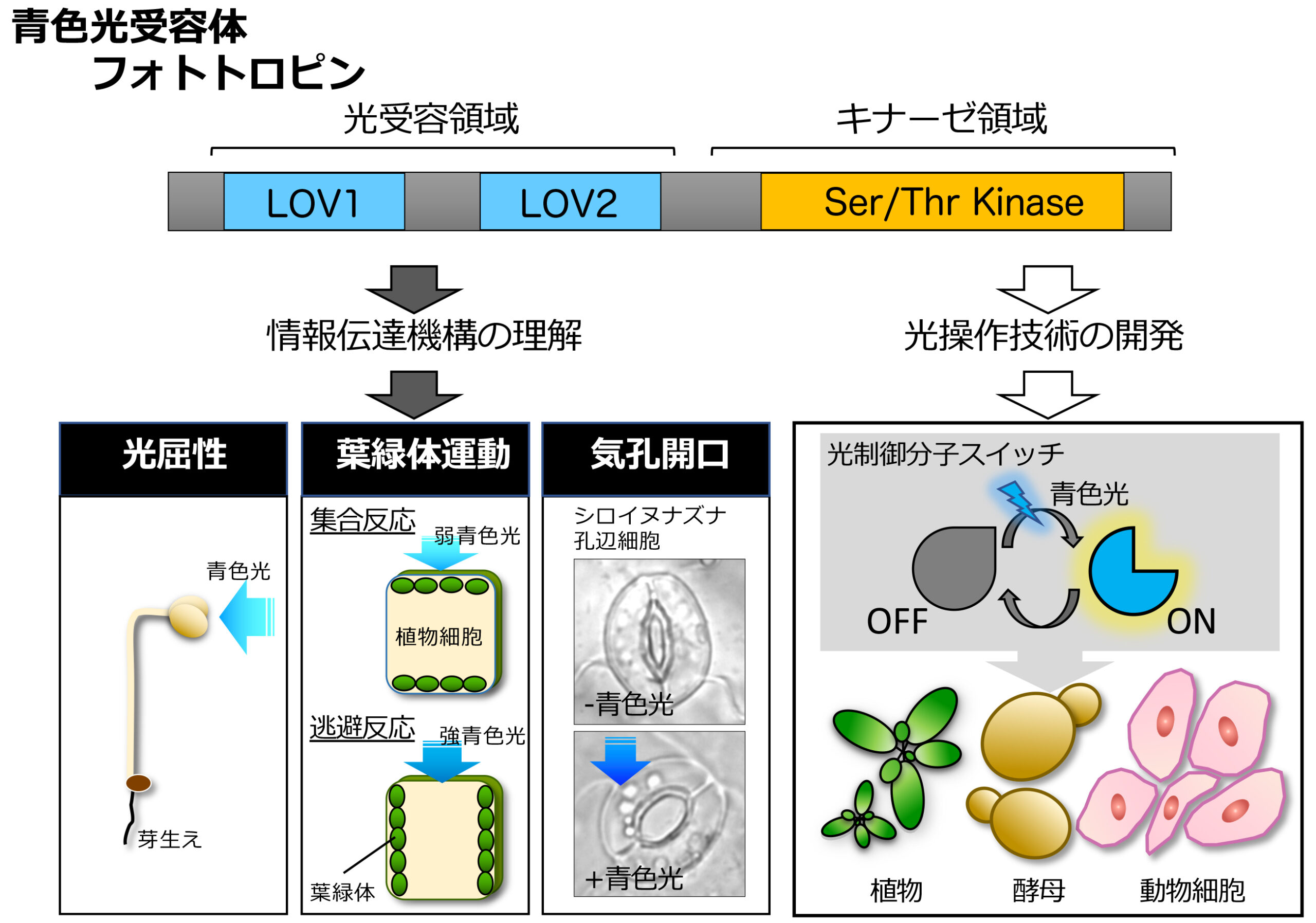Plant Physiology
Core Course
Staff
Michitaka Notaguchi
- Position
- Professor
- Office
- Science Building 2, Room 122
- Phone
- 075-753-4123
- Fax
- 075-753-4138
- mat(at-mark)gr.bot.kyoto-u.ac.jp
- HP in Nagoya Univ.
- http://bbc.agr.nagoya-u.ac.jp/~graft/index2.html
Nobuyoshi Mochizuki
- Position
- Assistant Professor
- Office
- Science Building 2, Room 125
- Phone
- 075-753-4138
- Fax
- 075-753-4126
- mochizuki(at-mark)physiol.bot.kyoto-u.ac.jp
Shoiri Nagahara
- Position
- Assistant Professor
- Office
- Science Building 2, Room 125
- Phone
- 075-753-4138
- Fax
- 075-753-4138
- nagahara.shiori.3n(at-mark)kyoto-u.ac.jp
Research
Research theme
1) Long-distance signal transduction in light response
2) Evolution of phytochrome structure and function
3) Analysis of light response in the field
4) Elucidation of GUN-plastid (chloroplast) signal transduction mechanism centered on GUN
5) Evolution of plastid signals
6) Exploring the mechanism of movement of plants in response to light
7) Development of optical manipulation technology (optogenetics) using blue light receptor phototropin
Outline of research theme
1) During the response to light at the individual level, in addition to the local response that occurs in the cell that received the light stimulus, it is necessary to integrate the response at the individual level by long-distance signal transduction. We use techniques such as micro-irradiation, micro-region gene expression analysis, and laser micro-surgery to analyze how optical information is transmitted within an individual.
2) Phytochrome, which is the main photoreceptor of plants, has branched into molecular species with different physiological functions and molecular properties in the process of evolution of seed plants. To better understand this process, we introduce phytochromes with various mutations into plants and analyze in detail how they affect phytochrome function.
3) The molecular mechanisms of light response have been clarified from the research conducted in our laboratory. On the other hand, there is still a lack of research on what kind of light response is occurring in the field. We have started research on light response in the field in collaboration with Professor Kudo of the Center for Ecology Research.

4) Chloroplasts transmit the their functions functional status, such as of chlorophyll, protein synthesis, and photosynthetic electron transport chain to the nucleus as plastid signals via GUN (Genomes Uncoupled), ). Plastid signals regulate nuclear gene expression, and are involved to respond to in various physiological functionsthe endogenous and exogenous stimuli. Using Arabidopsis gun mutants, The we study plastid signal transduction mechanism is analyzed by genetic and biochemical methods using Arabidopsis mutants and recombinant proteins.
5) GUN1 is a protein with a PPR (Pentatricopeptide Repeat) motif, but it appearedwhich has evolved just before plants colonized colonization of land. Plastid signals are also found in red algaemore primitive algae, but appear to have changed significantly with the adventby the acquisition of GUN1. To reveal the structural and functional evolution of GUN1, we analyze Arabidopsis GUN1 and its orthologues of Chara and Marchantia and their chimeras.In addition to Chara and liverwort GUN1, we believe that molecular genetic analysis using these molecular chimeras will reveal the relationship between plastid signals and the land colonization of plants.


6) We will study the mechanism of the response (phototropism, chloroplast movement, stomatal opening, growth, etc.) controlled by the blue light receptor phototropin using molecular biology methods and biochemical methods. Understand how phototropin receives blue light and then transmits light information within and between molecules, resulting in control of plant bodies, tissues, and cells. The main research target is Arabidopsis thaliana.
7) As a tool for understanding life phenomena, we will develop a molecular device that can be controlled by blue light using phototropin molecules. In phototropin, blue light irradiation induces a dynamic structural change in the photoreceptive region (LOV), which in turn increases its own kinase activity. We will develop an optical control molecular switch that utilizes this property mainly using molecular biology techniques, and aim to use it in plants, yeasts, and animal cells.
